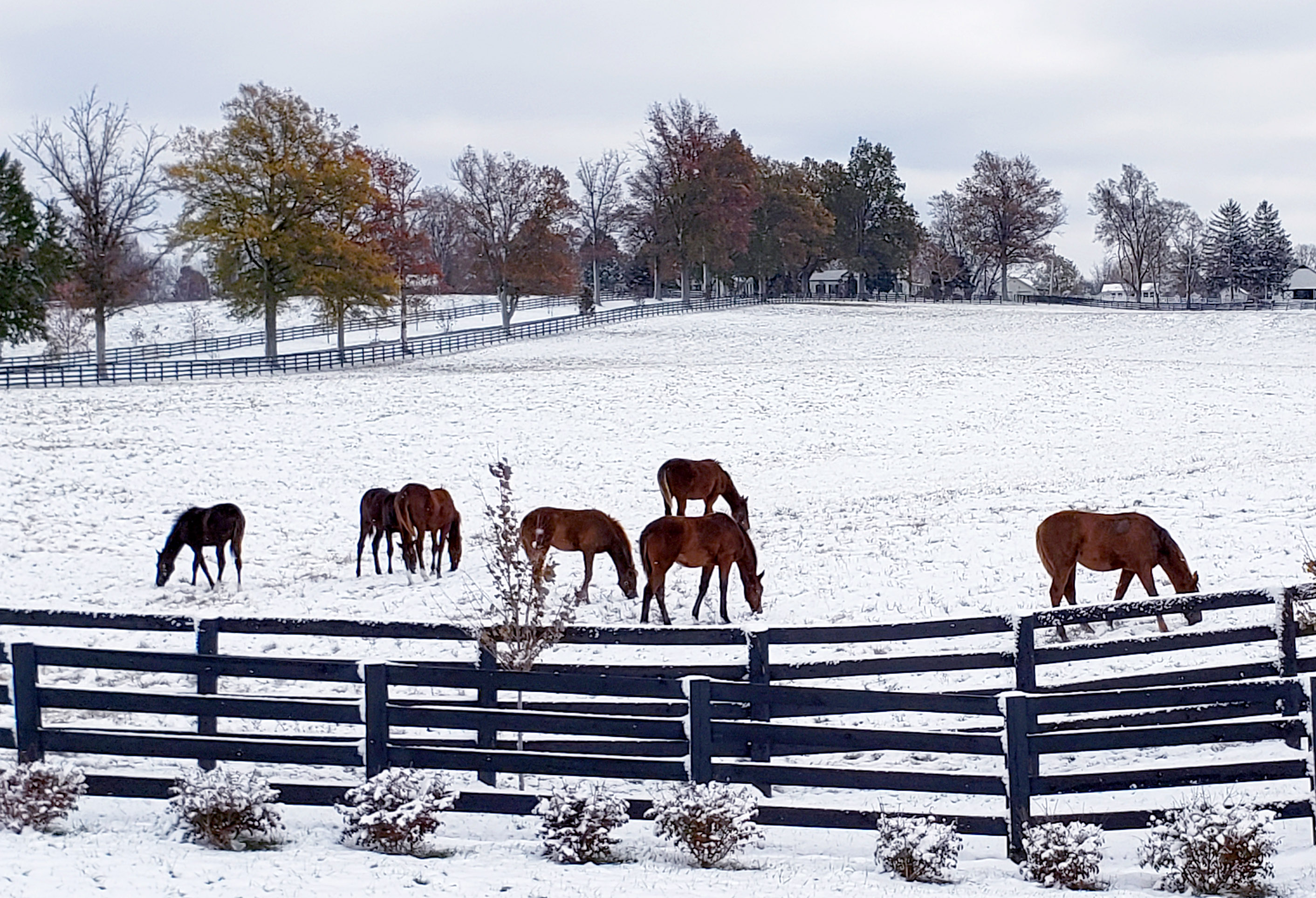Horse owners should have enough hay for winter
Horse owners should have enough hay for winter


Kentuckians have already experienced the first effects of winter. A University of Kentucky College of Agriculture, Food and Environment specialist said that was a good reminder that many horse owners will soon be feeding more hay and need to check their supplies.
“While most horse owners purchased hay months ago and neatly stored it away, it’s a good idea to double check what you have on hand,” said Bob Coleman, UK equine extension specialist. “Make sure you have what you will need or make a plan to make best use of what you have and extend your supply as long as possible.”
The nutrient profile of hay is important. It’s not too late for horse owners and managers to get a hay analysis and determine exactly what that hay will supply to their horses. Local county extension offices can help with taking proper samples and sending them to the lab for testing.
“If you’ve already started feeding hay earlier than you planned, take inventory of how many bales you have left and how many pounds of hay you have available,” Coleman said. “Make sure your storage method has kept the hay in good shape. You don’t want to find out later that your tarp ripped and caused bales to spoil from excessive moisture.”
Coleman recommends getting a good estimate on body weight for all horses because that number determines the animal’s daily nutrient needs and feed intake requirements. Horse owners can use a heart girth tape to get an estimate or use the Healthy Horse app, available through Android and Apple app stores, to estimate current and ideal body weight.
“The body weight is so important when you are determining how much to feed horses each day,” he said. “A 1,000-pound horse needs to eat 2% of its body weight each day, so about 20 pounds of feed. It doesn’t seem like a lot of hay, but if you underestimate your horse’s weight and buy 100 days’ worth of hay for a 1,000-pound animal that actually weighs 1,200 pounds, you’ll be short by more than eight bales per horse.”
Horse’s body condition scores can change, so it’s a good idea to monitor each animal throughout the season to make sure feed management is working.
“If your horses are gaining in body condition score, you might be able to feed less, while horses that are losing body condition score, may need more,” he said.
The way horse owners feed hay may contribute to cost savings or losses. Research shows that using a feeder that minimizes hay waste results in significant savings in feed costs. Just feeding on the ground can result in as much as 57% feed waste.
“Get a good feel for how long a bale lasts and how much the horses are cleaning up,” Coleman said. “If they are leaving hay behind, you might be feeding too much or not using a waste-reducing feeder. If you keep a good watch on body condition score and manage your reserves well, you can probably get through the winter with more than enough.”
Ag Equine Programs Weather
